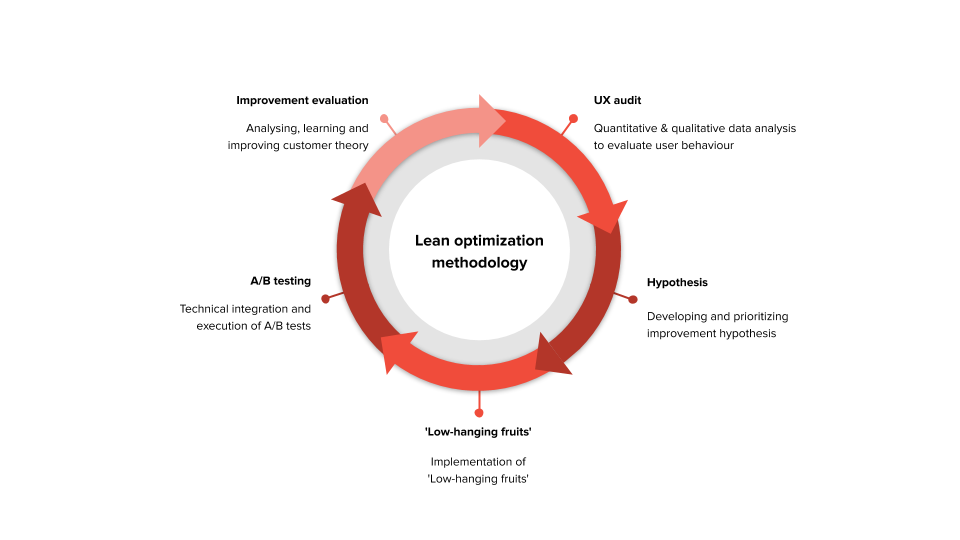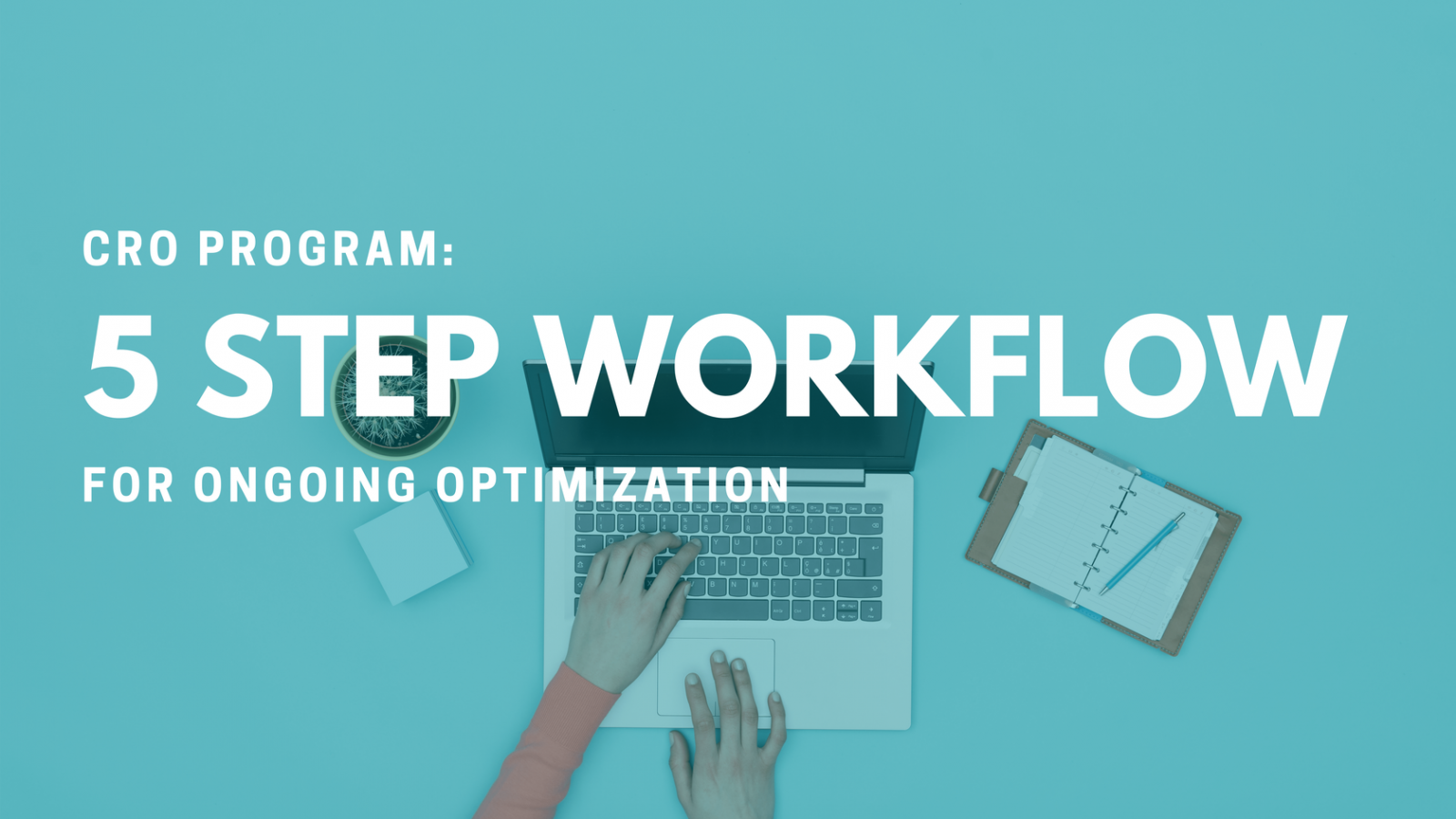Increasingly more merchants start introducing conversion rate optimization to their marketing activities. According to Econsultancy, however, almost two thirds (63%) of companies lack a CRO program — a structured approach to optimization.
The absence of a proper CRO program decreases the efficiency of your optimization efforts, and the growth of your KPIs becomes less significant than you would like to. To avoid it, you should make sure that your company has a set workflow in place.
To reach tangible results in conversion optimization, you should adopt a lean optimization methodology, which entails ongoing optimization. The diagram below shows how the workflow looks in practice:

- UX audit
You should start the optimization efforts by identifying your website’s weak spots. To do so, run a user experience audit, which combines quantitative and qualitative researches and uncovers where and why your visitors struggle to convert. - Definition of hypothesis
After identifying problems, you should proceed to come up with ways to solve them. In the CRO universe, such ideas are called improvement hypotheses, as later on, you will proceed to test and evaluate your ideas. - Implementation of ‘low-hanging fruits’
Fix all technical bugs right away to improve user experience as soon as possible. - A/B testing
Test new page layouts, content, design, and any radical changes before permanently implementing them on the website. You can read more about A/B testing here! - Improvement evaluation
When you have implemented all identified improvements and ran all tests, proceed to update your customer theory. With freshly gained knowledge about your customers, go back to step 1.
Proper conversion rate optimization is a time-consuming process that requires quite a lot of knowledge in different areas, starting with user research, data analysis, and skills in A/B testing statistics to wireframing and quick design sketches.
To help merchants adopt the CRO to their daily activities, our team has been offering retainer programs for over a year now. Merchants sign up and we take care of the rest.
We develop the CRO program for each store individually and tailor to a specific company’s needs and capabilities. For instance, one of our clients is a leading kitchenware retailer. Their CRO program included:
- Customized A/B testing program
- Robust data tracking implementation to collect data and keep improving the website
- Data visualization for constant and easy KPI monitoring and reporting
- Extensive user research based on qualitative and quantitative data
- Optimization of the entire shopping experience from marketing campaigns to the ‘Thank you’ page
- Close cooperation with the development team to ensure immediate fix of the spotted bugs and implementation of ‘low-hanging fruits’
- Close communication with the client and regular reporting
- Monthly summary report with all completed tasks and results
Running the program for a year helped us achieve quite impressive results, those being:
- 78% win-rate for on-going A/B testing program
- 73.32% increase in add-to-cart rate after landing page revamp
- 148% increase in mobile revenue after fixing ‘low-hanging fruits’
- 745.72% revenue increase for cart abandonment emails
- 81.12% increase in revenue from organic traffic since SEO strategy implementation
As you can see, having a proper CRO workflow in place can get you tangible results, which will be visible not only in increased numbers of main KPIs but, most importantly, you will be able to see the results in your bank account.
If you need help adopting the workflow in your organization, shoot us an email at [email protected], and let’s start optimizing together!



Share on: